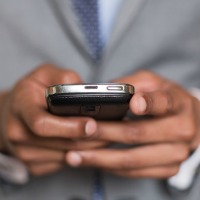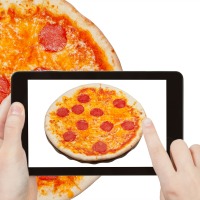![]() Beacons are facing an uncertain future, as neither retailers nor customers have warmed to them. We’ve documented the challenges that beacons have faced and the competition that could replace them. But despite a mixed past, beacons could have a bright future with an estimation that 4.5 million beacons could be in usage by 2018.
Beacons are facing an uncertain future, as neither retailers nor customers have warmed to them. We’ve documented the challenges that beacons have faced and the competition that could replace them. But despite a mixed past, beacons could have a bright future with an estimation that 4.5 million beacons could be in usage by 2018.
So far the adoption rate for beacons seems to be hitting the tipping point with a select group of large retailers like Macy’s, Target and Lowe’s relying on them heavily. Even so, the technology is still new for customers and the results aren’t as as predicted.
First, although some retailers have adopted beacon technology, they have been using it primarily as a way to push out ads and offers to customers. This approach to marketing can be limited without the context to understand why customers are in the store in the first place. Unfortunately, a large number of retailers use beacons this way explaining why the adoption has been slow.
From a consumer standpoint, beacons can be confusing and time consuming to set up. Customers must have downloaded and installed the app, plus have Bluetooth turned on on their mobile device for the beacon to work when they enter a store. This requires an ongoing education process to ensure that customers are completing all the steps in order for retailers to reach them.
But consumers don’t always want messages pushed at them. Instead, retailers would be wise to implement a pull aspect to beacons. This could entail customers using their mobile device in-store via beacons to check prices, availability and even read performance reviews on products before purchasing.
If beacons are to succeed in the future, they need to be more user-friendly to both retailers and consumers. On the retail side, stores need to make the investment not only to install the equipment but also to incorporate geofencing technology allowing customers to receive the appropriate message or offer at the appropriate location within the store. This technology combined with beacons could create future success for beacons.
Retailers also need to invest in a long-term strategy for beacons and how they will use them to not only collect data, but interpret it to better engage with customers. Beacons can’t be just another marketing technology fad, they need to be part of a larger goal to reach customers.
For customers, beacon technology needs to be normalized more. It is still unsettling to some when they receive these in-store offers. Some consumers are also suspicious of this type of marketing. Once beacons become more common and people become comfortable with them, this should change.
With proper intent and implementation, beacons could be the future of marketing technology. But before that happens, there still needs to be buy-in from retailers, in terms of overall investment and consumers need to feel more at ease with them.
Need help figuring out best to use beacons in your retail strategy? Contact us.






